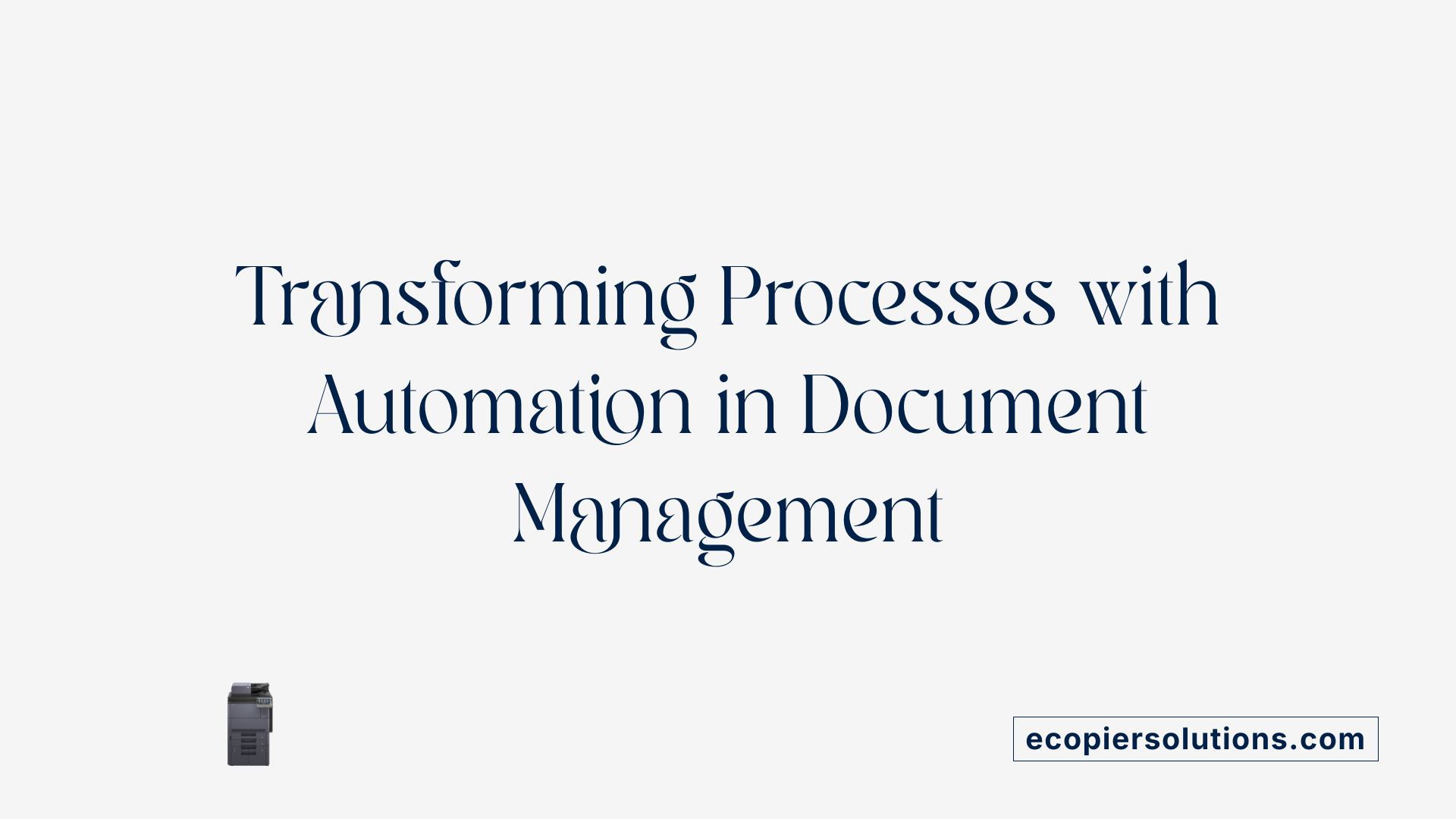Introduction
In today's fast-paced customer service environments, efficiency is key. One of the most effective ways to enhance efficiency and improve customer satisfaction is through the implementation of Document Management Systems (DMS). These systems help in organizing, securing, and retrieving vital customer information, thus streamlining customer support operations. This article explores how businesses can leverage DMS to improve their customer support services, reduce response times, and foster better customer experiences.
Understanding DMS in Customer Service

What is DMS in customer service?
DMS, or Document Management Systems, are essential tools in optimizing customer service by organizing and securing information linked to customer interactions. These systems streamline the retrieval of crucial documents, thus improving the overall efficiency of customer service processes.
Role of DMS in organizing information
When customer service representatives have immediate access to relevant documents, it enhances their ability to resolve inquiries swiftly. This system minimizes operational delays. For instance, DMS can facilitate instant access to customer contracts, feedback forms, and service histories. With a centralized document repository, teams can avoid confusion over outdated information, ensuring smoother communications and fewer errors in customer handling.
Support for Customer Relationship Management (CRM)
Integrating DMS into CRM processes strengthens customer support by automating workflows. Automation minimizes the risk of human errors and enhances compliance with data protection regulations, fully securing sensitive customer data. A well-implemented DMS ensures that all customer-related information is available uniformly across various departments, allowing for consistent interactions.
Avoidance of data silos and security risks
Without a DMS, companies risk creating data silos where important information is isolated within departments. This fragmentation can lead to inconsistent customer experiences. Moreover, effective DMS implementation heightens security by safeguarding customer data through features like automated backup and secure access controls. By consolidating information, businesses can not only protect client data but foster trust and satisfaction in their services.
Importance of Documentation in Customer Service

Why is documentation important in customer service?
Documentation is crucial in customer service as it significantly enhances the overall customer experience. When information is well-organized and easily accessible, customers do not need to repeat their queries or information, which leads directly to higher satisfaction levels. This streamlined process encourages customers to feel valued and understood.
Moreover, effective documentation facilitates tracking feedback, which helps businesses identify trends and improve product quality. By being attentive to customer insights, companies can refine their offerings to better meet customer needs.
Reducing wait times is another essential advantage of organized documentation. Quick access to relevant information means that inquiries can be resolved faster, minimizing delays and providing a smoother interaction for customers. This efficiency fosters loyalty and mitigates the risk of negative reviews.
In addition, streamlined documentation promotes teamwork among customer service representatives. It serves as a vital resource for training new employees, ensuring that all staff members can provide consistent and accurate information. Ultimately, effective documentation not only supports customer retention but can also drive sales through satisfied, loyal customers who appreciate quick, responsive service.
The Purpose and Benefits of Document Management

What is the purpose of document management in customer service?
The purpose of document management in customer service is to capture, track, and store electronic documents efficiently. This enhances overall operational efficiency in several ways. By centralizing document storage, businesses can improve access control and ensure document security, which reduces the risk of data breaches.
Moreover, effective document management streamlines search and retrieval processes. Customer service representatives can quickly access necessary information, leading to improved response times and heightened customer satisfaction. When inquiries require swift responses, a centralized system makes it easier for staff to retrieve documents without delay.
Centralizing document storage
A robust document management system securely aggregates and organizes documents in one repository. This not only fosters collaboration among departments but also ensures that all employees work from the same, up-to-date versions of documents. Consequently, customer interactions become more informed and efficient.
Streamlining search and retrieval
With advanced search capabilities, a document management system can significantly reduce the time spent on finding relevant documents. Instead of searching through stacks of paper or multiple systems, support staff can locate files in seconds, enabling timely resolutions to customer inquiries.
Ensuring legal compliance
Maintaining adherence to legal regulations is another crucial function of a document management system. By systematically organizing documentation, businesses can protect sensitive data while also ensuring audit readiness. This compliance fosters trust between customers and the service provider, thereby enhancing overall service quality.
Ultimately, transitioning from paper-based documentation to a digital document management system can cut costs and vastly improve customer service delivery.
Organizing Documents for Streamlined Management and Retrieval

How do you organize documents to streamline management and retrieval?
To effectively organize documents for streamlined management and retrieval, start with these key strategies:
Creating logical folder structures
Developing a clear and logical folder hierarchy is essential. Organize folders by categories relevant to your business, such as departments (e.g., HR, Finance, Sales) or document types (e.g., invoices, contracts). This method helps ensure documents can be found easily.Implementing consistent file naming
Consistent naming conventions streamline document identification. Use descriptive names that include key details such as dates, project names, and document types. This practice reduces confusion and helps team members locate files without opening each one.Using metadata and tags
Enhance document searchability by incorporating metadata and tags. This allows for easier retrieval through search functions, facilitating quick access to specific documents. Metadata can include attributes like creation dates, authors, and document statuses.
Employing these strategies, alongside automation tools for digital document management, enhances accessibility and minimizes the time spent searching for information. Regular audits to maintain organization will ensure ongoing efficiency.
Leveraging Automation in Document Management

Automating routine tasks
Implementing automation within a Document Management System (DMS) transforms how businesses handle everyday tasks. By automating repetitive functions such as document sorting, approval chains, or invoice processing, organizations can significantly reduce the workload on employees. This allows customer service representatives to dedicate more time to assisting clients rather than getting bogged down by manual processes.
Enhancing accuracy and efficiency
With automation, the accuracy of document handling is drastically improved. Automated systems ensure that every document follows a predefined workflow without the risk of manual oversight. For example, automated record retention systems maintain compliance and create detailed audit trails, fostering a culture of precision within business operations.
Reducing human error
One of the most significant benefits of an automated document management approach is the reduction of human error. Automation minimizes the chances of miscommunication or inconsistencies that often arise from outdated information. By utilizing advanced document indexing and retrieval technologies, organizations can ensure that customer inquiries are met with accurate and timely responses—fostering trust and enhancing overall satisfaction.
| Benefit | Description | Impact on Customer Service |
|---|---|---|
| Automating routine tasks | Reduces manual workload | More time for client interactions |
| Enhancing accuracy and efficiency | Guarantees precision in document handling | Faster, more reliable responses |
| Reducing human error | Lowers risks associated with misinformation | Builds customer trust and satisfaction |
Improving Collaboration and Security with DMS

Facilitating team collaboration
Document Management Systems (DMS) enable seamless collaboration among departments. By centralizing information storage, teams can easily access and collaborate on necessary documents. This eliminates data silos, ensuring that every department works with up-to-date and consistent information. Enhanced communication facilitates quicker response times, critical in addressing customer inquiries effectively.
Enhancing data security
A robust DMS integrates security features that safeguard sensitive customer data. Centralizing documents helps maintain confidentiality while complying with data protection regulations. Features such as automated backups, password protection, and detailed audit trails ensure that customer information is secure. This not only protects the business from potential breaches but also reinforces ethical data handling practices.
Building customer trust
With improved data security and efficient collaboration, businesses can foster greater customer trust. When customer service representatives can swiftly access accurate and secure information, they are better equipped to address inquiries. This transparency and reliability build stronger relationships with clients, leading to increased satisfaction and loyalty. Ultimately, investing in an effective DMS enhances both internal efficiency and external customer experiences.
Conclusion
Document Management Systems represent a crucial tool for streamlining customer support by enhancing efficiency and improving customer satisfaction. By centralizing and automating the management of customer information, businesses can ensure quick and secure access to the documents their service teams need. Enhanced collaboration and security not only safeguard sensitive information but also build customer trust, which is vital for sustained business success. Through the effective implementation of DMS, companies can create an agile and responsive customer service process, fostering long-term customer loyalty.
References
- Five Ways Document Management Improves Customer Service
- How Document Management Systems Can Improve Customer Service
- Improving Customer Service with Document Management System
- How To Optimize Your Customer Experience Strategy
- Want to Improve Customer Satisfaction? (4 Ways to Use a DMS)
- 11 Best Practices for Document Management - DocuWare
- How to Streamline Document Management and Workflow - IRIS Global
- The Role of Document Management Systems in Customer ... - Folderit
- Document Management Process [Tools & Tips] | Confluence































